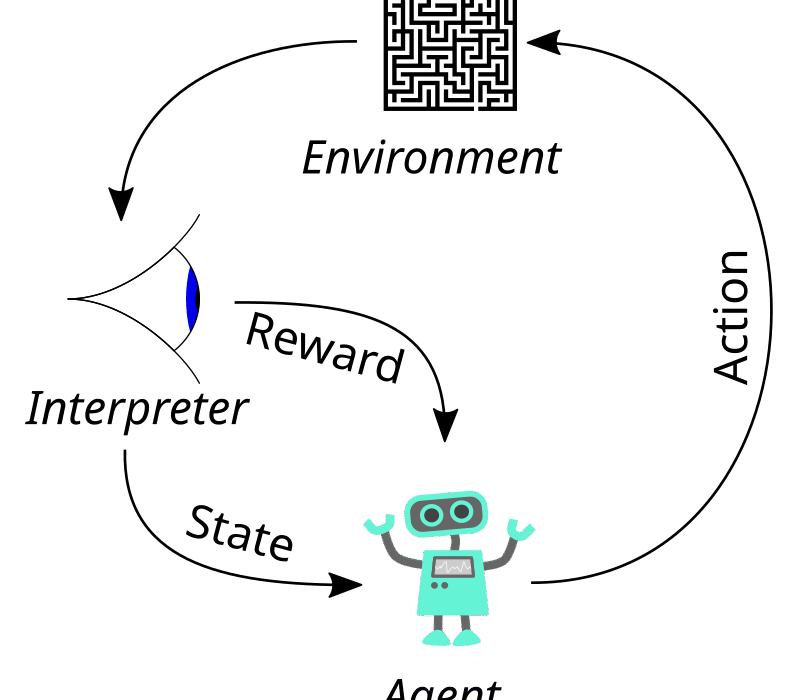Not long ago, decision-making in business, government, healthcare, and even sports was guided largely by instinct and past experience. Executives relied on gut feelings, doctors trusted traditional diagnostic wisdom, and coaches followed the same strategies passed down for generations. Then came the digital revolution — and with it, a tidal wave of data. Suddenly, every action, click, purchase, step, and conversation could be recorded, stored, and analyzed. Humanity began generating more data in a single day than in centuries of history.
In this ocean of information, two distinct but closely related disciplines emerged as guiding lights: Data Science and Data Analytics. At first glance, they might appear interchangeable, both dealing with numbers, charts, and algorithms. But their purposes, tools, and professional landscapes reveal a deeper, more nuanced story.
Understanding the difference isn’t just an academic exercise — it’s a career-shaping decision for thousands of professionals around the world. Choosing between the two paths means choosing a certain way of thinking, working, and interacting with the data that defines our modern world.
Defining the Territory
Data Science and Data Analytics are sometimes portrayed as rival disciplines, but in reality, they are more like different muscles in the same organism. They complement each other, overlapping in many skills and tools, but diverging in focus and end goals.
Data Science is the architect and inventor, concerned with designing new methods of extracting meaning from data. It asks questions like: What patterns exist here that no one has noticed before? Can we build a model that predicts the future? Can we automate decision-making? It blends statistics, programming, and domain knowledge with creativity and curiosity.
Data Analytics, on the other hand, is the detective and storyteller. It seeks to understand what has already happened and why. Analysts pore over historical data to identify trends, diagnose problems, and provide actionable insights. The work is often closer to the decision-making surface, producing reports, dashboards, and visualizations that non-technical stakeholders can act upon.
In simple terms: Data Science builds the future; Data Analytics explains the past and present. But the magic happens when they work hand-in-hand.
The Role of a Data Scientist
To truly understand Data Science, imagine a professional who wears the hat of a mathematician, a programmer, a researcher, and sometimes even a philosopher. Data Scientists don’t just use existing tools — they often create them. They build predictive models, design experiments, and explore vast datasets with techniques ranging from machine learning to natural language processing.
A typical Data Scientist might be asked to create an algorithm that can forecast product demand for the next quarter based on sales, weather patterns, social media sentiment, and economic indicators. This is not just about fitting numbers to a graph — it involves gathering data from disparate sources, cleaning and transforming it, selecting the right statistical or machine learning approach, and validating the results to ensure they hold up in the real world.
Data Scientists often operate in environments of uncertainty. The problem might not even be fully defined when they start. They are tasked with pushing the boundaries of what’s possible, which demands comfort with ambiguity, strong hypothesis-driven thinking, and the ability to explain complex concepts to non-technical audiences.
The Role of a Data Analyst
A Data Analyst’s work is more immediately visible to decision-makers. Imagine a company notices a sudden drop in customer retention over the past three months. A Data Analyst steps in, digging through customer feedback, purchase histories, and support ticket logs. Using SQL queries, statistical tests, and visualization tools, they piece together the narrative: perhaps a competitor launched a new product, or a recent policy change has alienated a segment of loyal customers.
The analyst then transforms this investigation into a clear, accessible report — often accompanied by interactive dashboards — that executives can use to take corrective action.
Where Data Scientists explore open-ended questions, Data Analysts often focus on well-defined business problems. Their work is less about inventing new methods and more about mastering the existing arsenal of analytical tools to extract immediate, actionable insight.
Tools of the Trade
While there’s considerable overlap, the toolkits of Data Scientists and Data Analysts reflect their different priorities. Data Scientists tend to live in programming environments like Python and R, using libraries such as scikit-learn, TensorFlow, or PyTorch to build and train models. They also leverage big data platforms like Apache Spark or Hadoop when datasets grow too large for conventional tools.
Data Analysts, while sometimes proficient in Python or R, often work extensively with SQL for database querying, Excel for quick analysis, and visualization platforms like Tableau, Power BI, or Looker. Their outputs are designed for clarity and accessibility, enabling decision-makers to grasp the story without wading through raw data.
Of course, the lines blur. Many Data Analysts learn Python to automate repetitive tasks; many Data Scientists create dashboards to communicate results. But the emphasis remains: Data Scientists innovate and experiment, while Data Analysts interpret and present.
The Educational Pathways
The road to becoming a Data Scientist often begins with a strong foundation in mathematics, computer science, and statistics. Many hold advanced degrees — master’s or PhDs — though the industry increasingly values demonstrated skills over formal credentials. The role demands not only technical mastery but also domain-specific knowledge, whether that’s in finance, healthcare, e-commerce, or another field.
For Data Analysts, the entry barrier is generally lower, though still substantial. Many successful analysts come from backgrounds in business, economics, or information technology, supplementing their skills with training in SQL, data visualization, and statistical reasoning. Certifications, bootcamps, and online courses have opened the field to those without traditional academic backgrounds, democratizing access to analytical careers.
Career Trajectories
The career arc for a Data Scientist often leads toward senior technical roles like Machine Learning Engineer, Research Scientist, or even Chief Data Scientist. Some pivot into product development or AI-focused entrepreneurship. Their earning potential is among the highest in the technology sector, reflecting the specialized nature of their skills.
Data Analysts, meanwhile, can advance into senior analyst roles, business intelligence leadership, or transition into Data Science with further training. They can also specialize — for example, as marketing analysts, operations analysts, or financial analysts — carving niches in industries where deep domain knowledge adds immense value.
The Emotional Landscape of the Work
Beyond the technical details, there’s a very human dimension to both fields. Data Scientists often experience the thrill of creating something entirely new — a model that predicts with uncanny accuracy, an algorithm that uncovers a hidden pattern. But they also face frustration when months of work lead to dead ends, when a model fails in real-world testing, or when organizational resistance slows adoption.
Data Analysts, too, find satisfaction in their craft. There’s a deep sense of accomplishment in delivering a clear, compelling insight that directly influences a business decision. Yet the role can also be pressured, with tight deadlines and the constant need to translate complex findings into simple terms that non-technical stakeholders will trust and act upon.
Both roles demand resilience, curiosity, and a commitment to continuous learning. The tools evolve, the data grows, and yesterday’s cutting-edge method becomes today’s standard practice.
The Intersection and the Future
In truth, the boundary between Data Science and Data Analytics is becoming increasingly porous. As businesses recognize the value of data-driven decision-making, they expect professionals to have a blend of both skill sets. A Data Analyst who can build a predictive model gains an edge; a Data Scientist who can craft a business-ready dashboard increases their influence.
The rise of automated machine learning platforms, cloud-based analytics, and AI-assisted data exploration is also reshaping the landscape. Some tasks traditionally reserved for Data Scientists are being simplified, allowing analysts to step into more advanced analytical territory. Conversely, Data Scientists are being asked to think more like analysts — grounding their sophisticated models in the immediate needs and language of the business.
The future may see these roles merge into a broader category of “data professionals” with varying degrees of specialization. Yet the core distinction — between creating new ways of understanding data and extracting meaning from existing data — will likely endure.
Choosing Your Path
For someone standing at the crossroads between Data Science and Data Analytics, the decision is both practical and personal. It depends on your strengths, your tolerance for ambiguity, your career ambitions, and even your preferred daily rhythm.
If you are drawn to experimentation, to writing code that teaches a machine to learn, to tackling problems that may not have clear answers, Data Science may be your calling. If you thrive on uncovering the story hidden in a dataset, on providing clarity in the face of confusion, and on influencing decisions through clear communication, Data Analytics might be the better fit.
Whichever path you choose, the skills are transferable, the demand is growing, and the work is deeply impactful. In a world overflowing with information, the ability to navigate, interpret, and innovate with data is as close to a superpower as one can get.
The Human Side of Data
It’s easy to get lost in the technical jargon — regression models, neural networks, SQL queries — but both Data Science and Data Analytics are ultimately about people. Every dataset represents human actions, choices, behaviors, and needs. The models and reports we build affect real lives: a loan approval, a medical diagnosis, a job offer, a marketing campaign.
That’s why ethical considerations loom large in both fields. Data privacy, algorithmic bias, transparency — these aren’t side issues; they’re central responsibilities. A Data Scientist who builds a predictive policing algorithm must grapple with the risk of reinforcing systemic biases. A Data Analyst who interprets sales data must consider how misleading correlations can harm decision-making.
At their best, these professions combine rigorous analysis with moral integrity, using data not just to optimize profits but to improve systems, create fairness, and reveal truths that might otherwise remain hidden.
Conclusion: Two Paths, One Mission
Data Science and Data Analytics are not rivals but partners in the grand quest to make sense of our information-rich world. One invents new tools to peer into the unknown; the other uses those tools to illuminate the present and guide the next steps. Together, they transform raw numbers into meaning, meaning into action, and action into progress.
In the end, whether you call yourself a Data Scientist or a Data Analyst, you are part of a much larger story — one where humanity learns, for the first time in history, to truly listen to the voice of its own data.






